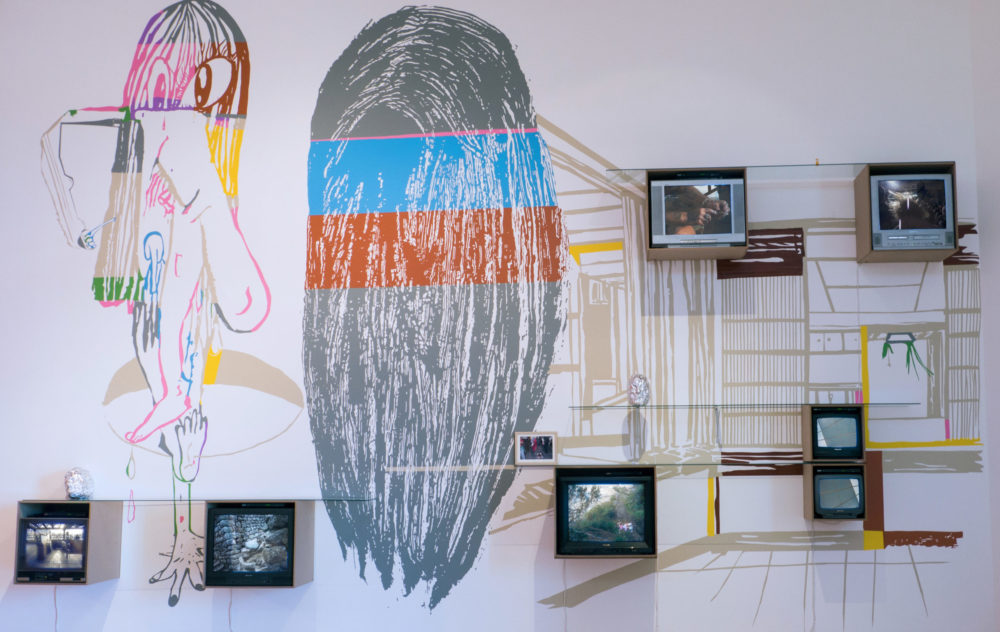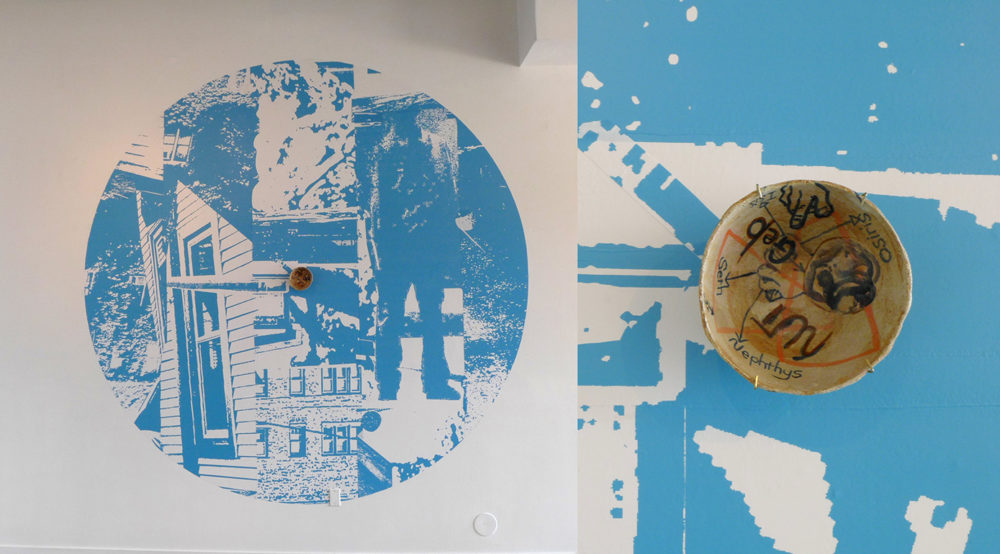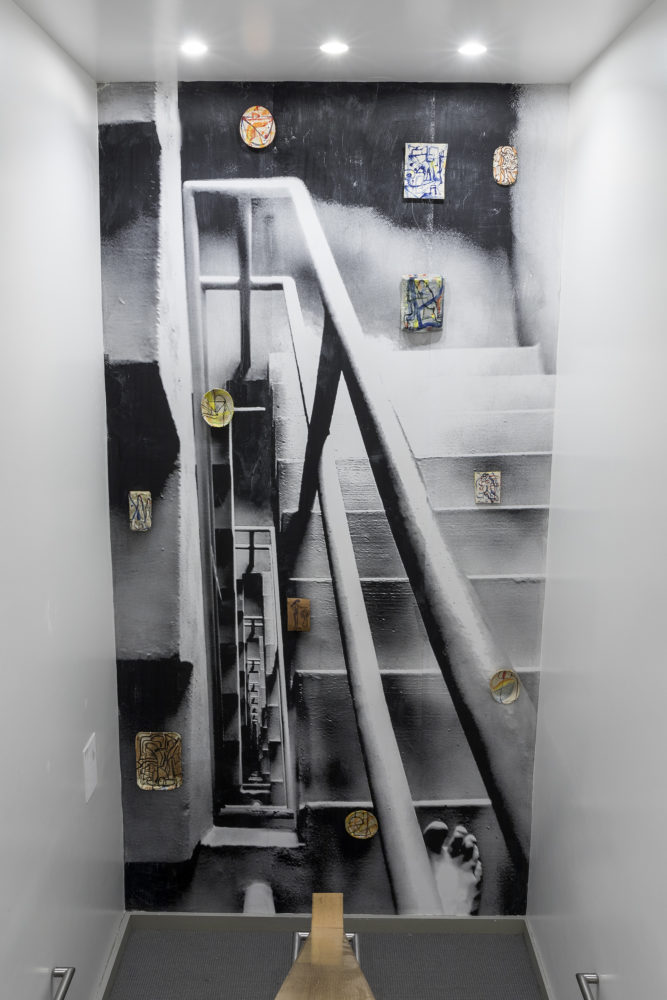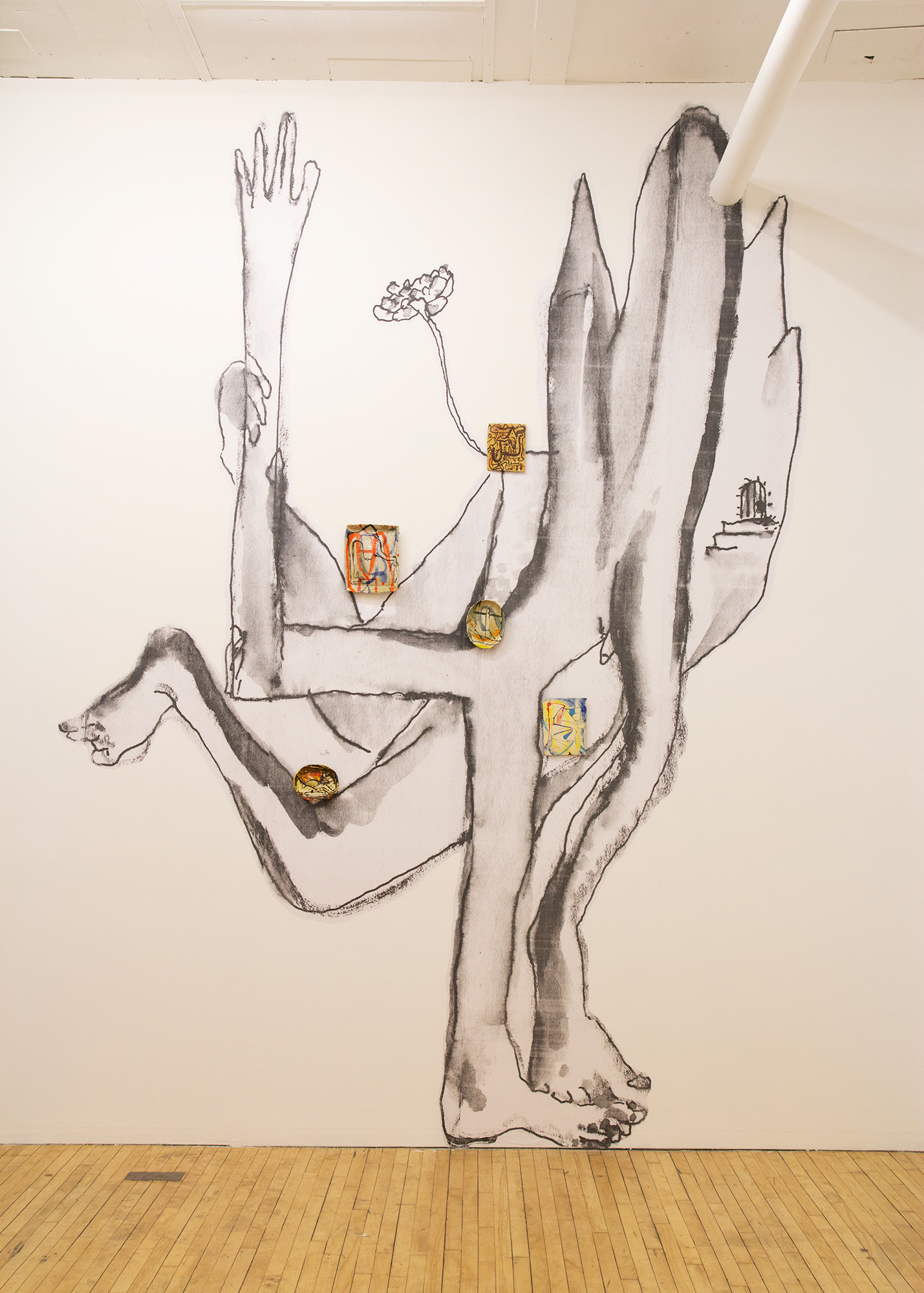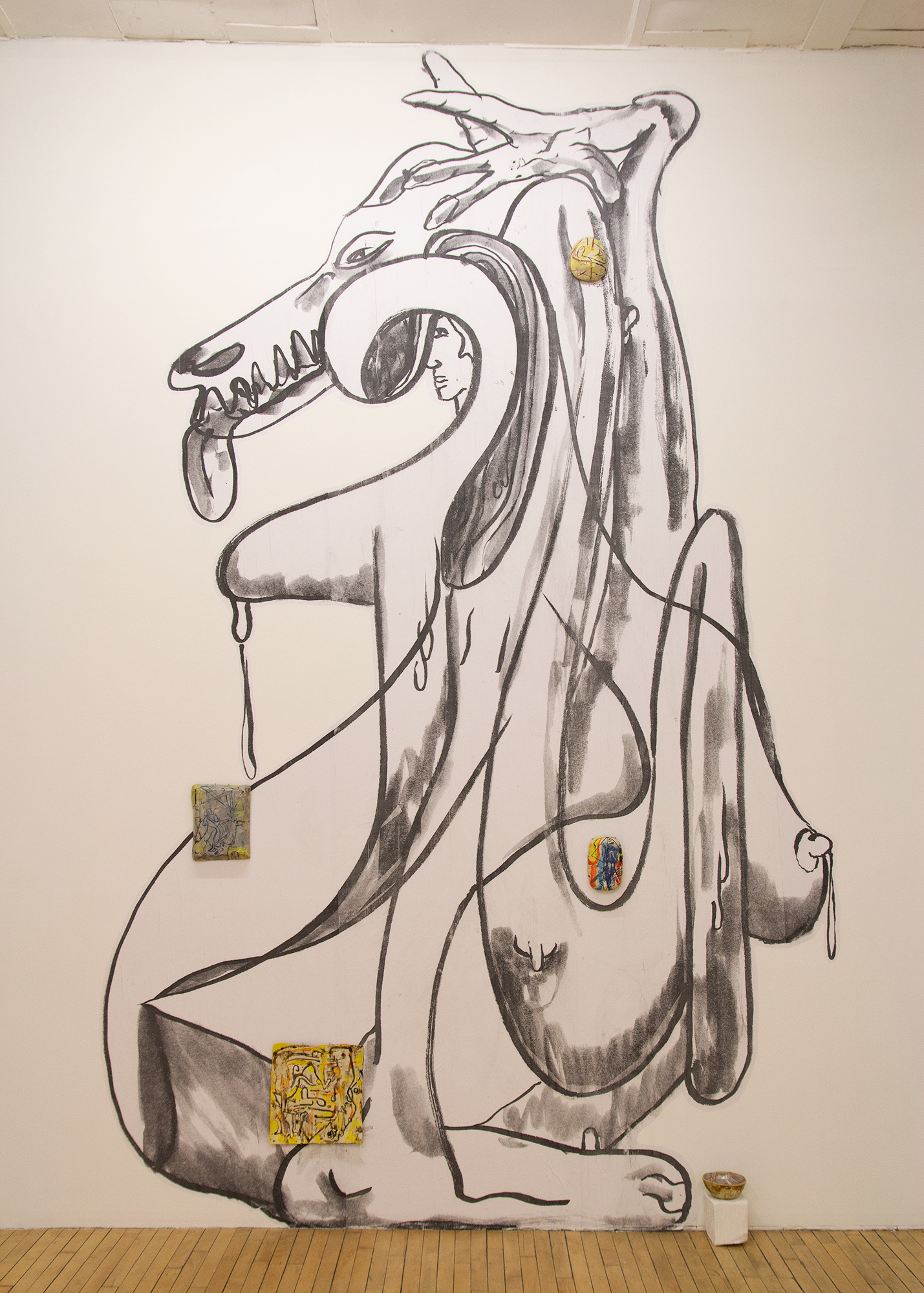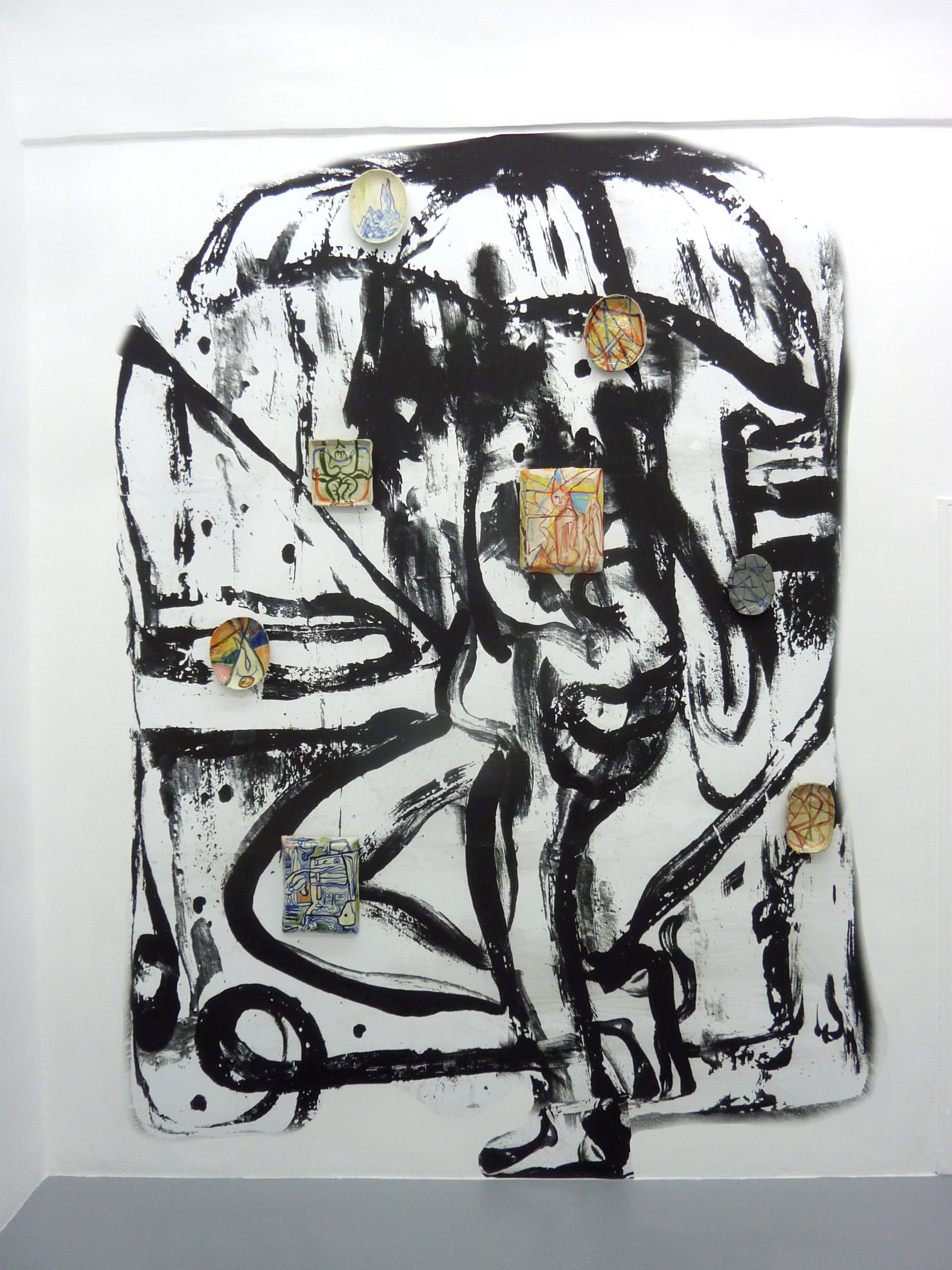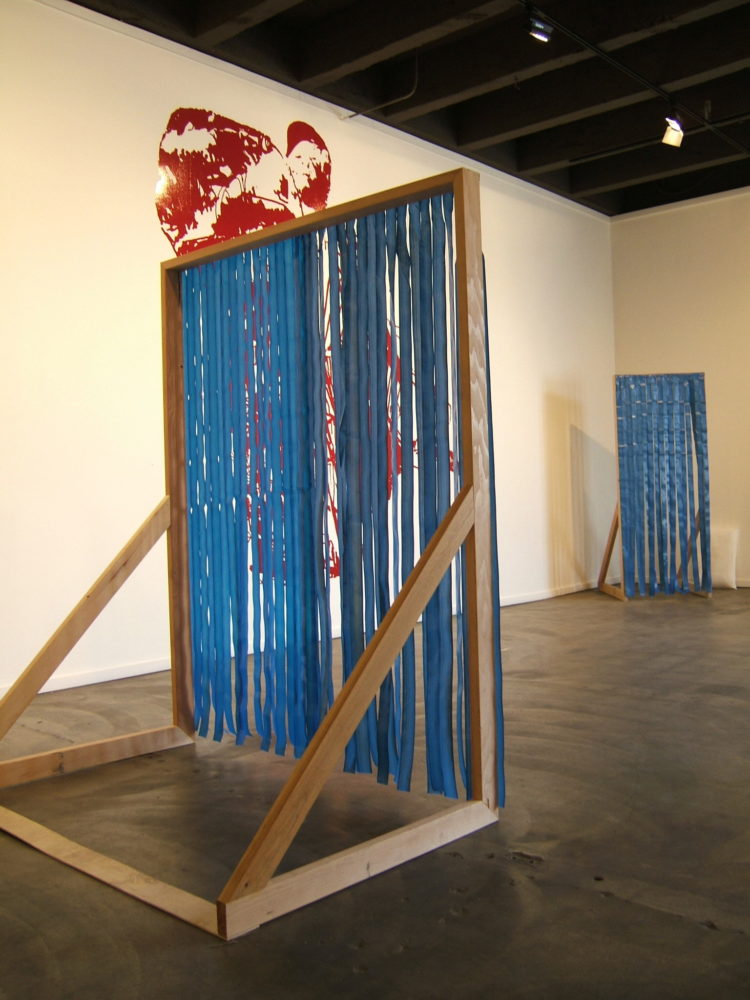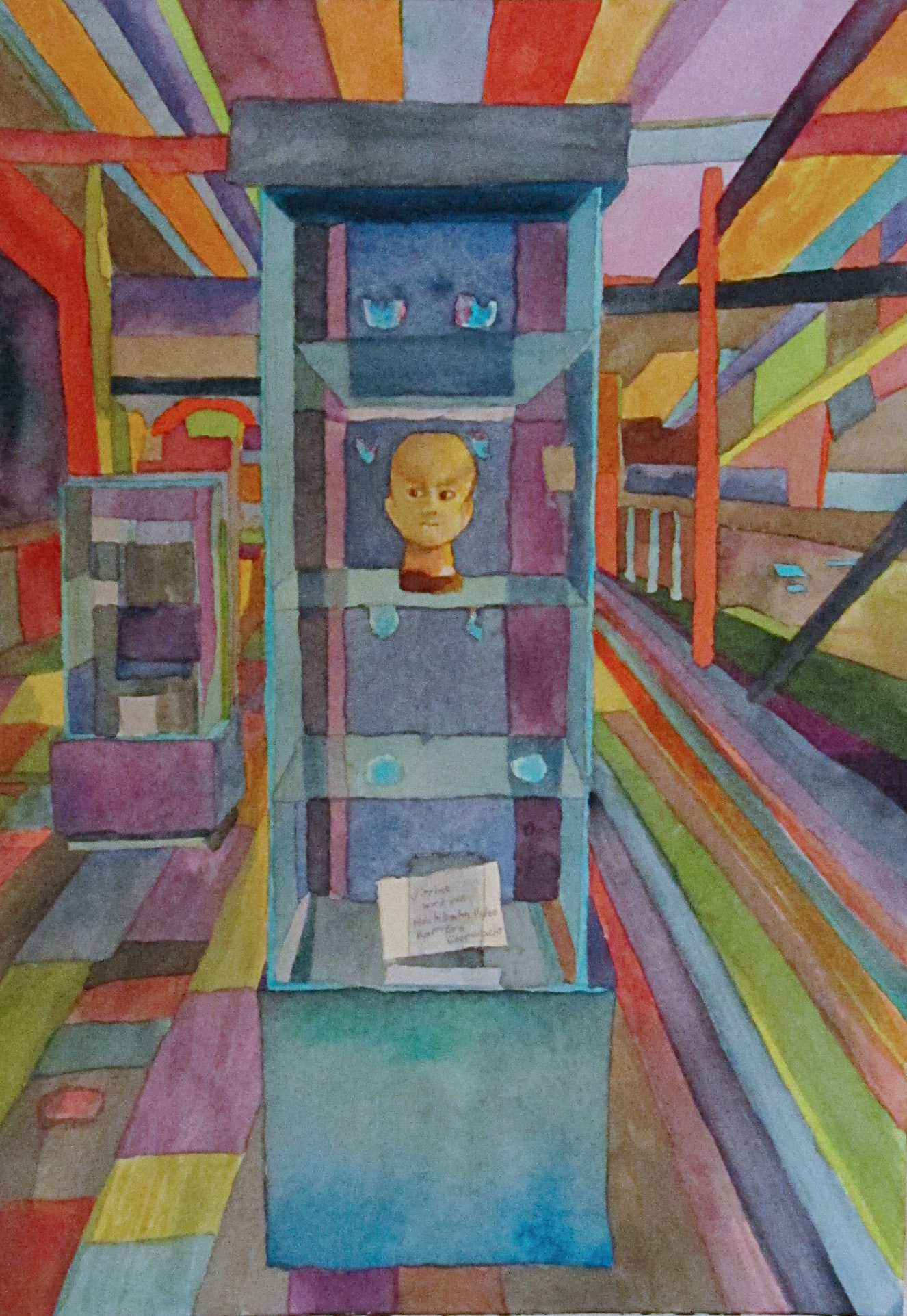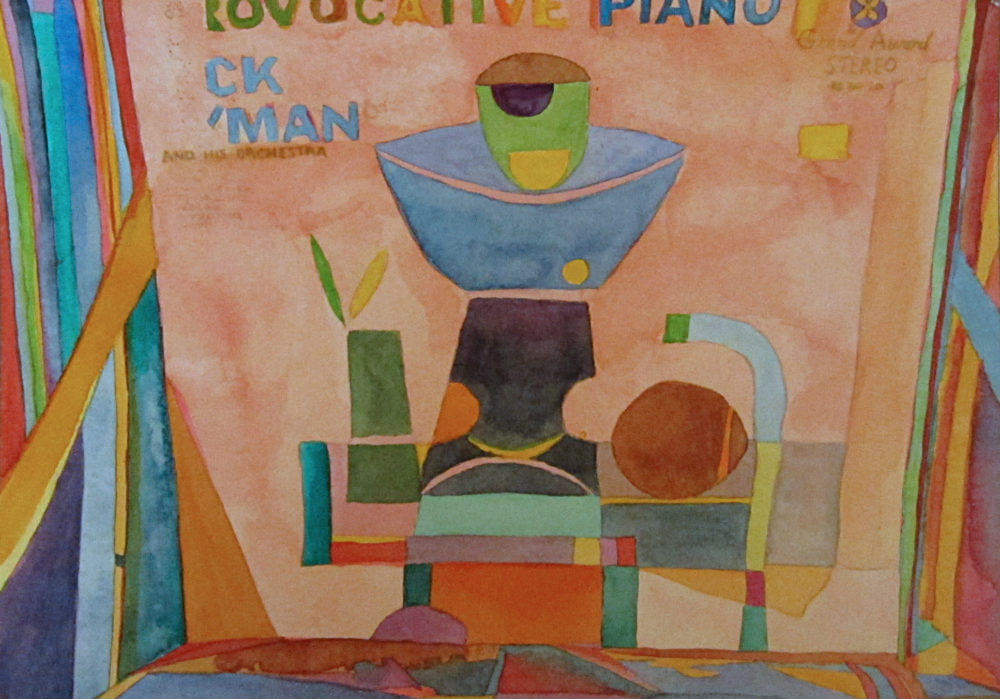A: In your work, you draw from a variety of sources – from historical events and works of fiction to the Milwaukee landscape and your own memories. What is your current inspiration?
SC: I’ve been trying to imagine Concrete Poetry, abstraction, and architecture intersecting. Also, and it dates me, I’ve been really enthralled by using Instagram. I only started using it on a regular basis last year, Brett Budsberg, an amazing sculptor from Milwaukee, suggested that I think about using it as an ongoing tally of inspirations that I encounter.
A: Can you speak on why you are drawn to installation as a medium for your work?
SC: When I was really young, I loved the graphic qualities of stickers, in particular skateboard stickers. Later, once I went to art school I had great instructors including Pat Lipsky Sutton, Chris Horton, Peter Mclean, and George McNeil. During college I had a particular way of making paintings where all the problems in the painting were solved by adding a horizon line. Once I graduated I decided to stop resolving paintings this way, which proved to be really detrimental. None of the paintings seemed to work and I hated what I was making.
Around 1995, I was working in a small studio in Washington DC. I somehow met the painter Francis Ruytor, whom had opened a small gallery with Jon Routson around the corner from my studio. The way they were exhibiting work was an eye opening that would become incredibly influential. In particular, a small drawing by Lilly van der Stokker and sharpie drawings that Francis was doing directly onto walls. When I started to exhibit work in group exhibitions, I tended to gravitate toward wanting to use spaces that were overlooked. I would install work in corners too close to power boxes, or spaces up high on the wall
Shortly after graduate school, I was offered a two person show with Bonnie Collura at the Walker Art Center. Previously I had been making both large paintings on paper and temporary wall paintings using mismatched paint from the hardware store. As I was on one side making work that was meant to persevere and retain a specific form at the same time, I was also making something that would only be visible for a week or two before being painted over. The latter pushed me away from making works that were precious and I was able to experiment more with production, placement, and process. The first wall pieces were very planned out up front, but then I started to be more flexible in the decision making during the installation process. There were moments where the architecture was already dictating so much in relation to a viewer’s’ experience that I wanted to think of ways the work was subjugated by the architecture, but could also introduce embellishments that contradicted the veneer that the architecture was invoking. Examples of this were introducing artificial pillows that were painted white into a hallway where the architecture was corporate or using plastic table skirting to replace a motif that an interior decorator had put into place. I think I became used to juggling lots of types of imagery and materials in such a way that the work started to resemble a group show or a mix tape.
A: Are there any artists or exhibitions that have resonated with you lately or have been of particular interest?
SC: I was at the Bologna Art Fair, right before the COVID-19 outbreak. I have always loved post-war Italian art, but there were some artists that I had not been familiar with such as Pino Pascali and Mario Airó.
Also, since last year or so, I can’t get over how great Eugenio Espinosa is. It’s funny because I was recently asked this question in particular about painters—which I describe myself as— and I froze.
But I do have a list of artists that constantly make me very happy: Yevgeniya Baras, Deb Sokolow, Peter Barrickman, George Condo, Alisson Weiss, Ester Partegas, Adel Abdessemed, Steven Parrino and Betsy Coulter’s Instagram feed which is really inspiring.
The last show I saw and loved here in Milwaukee was by Mike Paré and another show by Caroline Kent.
To see more of Santiago’s work, visit his website and Artadia’s Artist Registry.
Santiago’s biography and all images courtesy of the artist.

